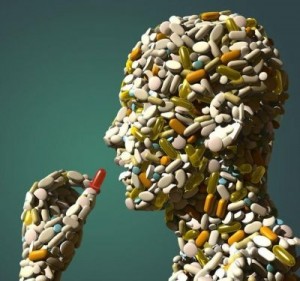Soy and Your Health: An Update on the Benefits
By: Mark Messina, PhD
Soyfoods have been a part of Asian diets for centuries. Today, there is a growing interest in these foods among westerners because of their proposed health benefits and also because their versatility makes them valuable for replacing meat and dairy foods in the diet. Soybeans provide excellent nutrition and contain a number of biologically active components that collectively may be responsible for a variety of health benefits. However, most of the interest in soy is due to their isoflavone content. Isoflavones have been rigorously studied for their protective effects against several chronic diseases including osteoporosis, coronary heart disease and certain forms of cancer.
Soy Isoflavones
Isoflavones are essentially unique to soyfoods; no other commonly-consumed foods contain enough to impact health [1]. Although they are among a group of naturally-occurring compounds known as phytoestrogens (plant estrogens), isoflavones are much different from the hormone estrogen. In fact, they are most accurately classified as SERMs (selective estrogen receptor modulators) [2]. Other examples of SERMs are the breast cancer drug tamoxifen and the breast cancer and osteoporosis drug, raloxifene. The effects of SERMs vary depending upon a variety of circumstances. SERMs like isoflavones may have estrogen-like effects, but depending on a number of factors, they may also have effects opposite to those of estrogen or no effects at all in tissues that are affected by estrogen. Therefore, looking at the health effects of estrogen doesn’t provide much information about how isoflavones act. The only way to learn about the effects of isoflavones is to look directly at their biological activity in studies.
Soybean Nutrition
Soybeans are unique among legumes, a group of foods that includes beans, peas, and lentils, because they are much higher in protein and fat than other beans, and lower in carbohydrate [3]. The fat in soybeans is primarily a combination of heart-healthy essential polyunsaturated omega-6 and omega-3 fatty acids [4]. This makes soybeans one of the few plant foods to provide both of the essential fatty acids. The carbohydrate in soy is comprised primarily of simple sugars that have been shown in some studies to act as prebiotics, thereby stimulating the growth of healthy bacteria in the colon. Soyfoods are also good sources of B vitamins and minerals such as potassium, iron and sometimes calcium. Soybeans are perhaps best known for their high protein content. Although soybeans contain trypsin inhibitors, compounds which can interfere with the digestion of protein, the normal processing used to produce soyfoods inactivates these compounds. As a result, protein in soy is very well digested; digestion typically exceeds 90 percent. For this reason, and because of its 2 excellent amino acid profile, soy protein is comparable in quality to the protein in animal products [5].
Soyfoods and Heart Disease
Research suggests that incorporating soyfoods into the diet may decrease LDL-cholesterol (the bad cholesterol) by as much as 8 percent [6]. When soyfoods replace conventional sources of protein in western diets, saturated fat intake is reduced and polyunsaturated fat intake is increased. As a result, blood cholesterol levels will be lowered. That soyfoods contain a combination of omega-6 and omega-3 fatty acids is especially important for reducing risk of heart disease [7]. In addition to the healthy fat found in soy, soy protein has been shown to directly reduce levels of blood cholesterol. The Food and Drug Administration awarded a health claim for soyfoods and coronary heart disease on this basis in 1999. The effects of soy protein are comparable to cholesterol-lowering benefits of soluble fiber, the kind found in oat bran.
In addition to lowering LDL-cholesterol, soyfoods give a modest boost to HDL-cholesterol, which is protective against heart disease, and reduces levels of triglycerides (another fatty compound in the blood that can raise heart disease risk). Finally, soyfoods may reduce heart disease risk in ways that are independent of their effects on cholesterol. For example, soyfoods may lower blood pressure [8] and research indicates that isoflavones directly improve the health of the arteries [9]. Therefore, even people with normal cholesterol levels can benefit by consuming soyfoods.
Soyfoods and Breast Cancer Risk
In Asian countries, where soyfoods are a usual part of the diet, breast cancer rates are much lower than in western countries. This observation helped fuel speculation that soyfoods reduce breast cancer risk. However, after years of research, it is not clear that women who begin to consume soyfoods in adulthood will lower their risk of cancer. Rather, the protective effects appear to be related to early soy consumption. That is, women who consumed these foods in childhood and/or the teen years may have a lower risk for breast cancer later in life. Protective effects of soy are thought to be due to actions of soy isoflavones on the developing breast in ways which make breast cells more resistant to being transformed into cancer cells later in life [10, 11].
Studies conducted in China and the United States show that the consumption of modest amounts of soy—1 to 1[1]½ servings per day—is associated with a 25 to 50% reduction in risk. Although the hypothesis that early soy intake is protective against breast cancer remains speculative, because the amount of soy needed for benefit is modest and soyfoods provide good nutrition, there is no reason to wait for the results of future research before encouraging young girls to consume soy.
Prostate Cancer
In studies of Asian populations, consumption of unfermented soyfoods such as tofu and soymilk, is associated with a reduced risk for prostate cancer. These studies show that Asian men who consume about two servings of soyfoods daily are about 30 to 50% less likely to have prostate 3 cancer than Asian men who consume little soy [12]. Some evidence also shows that, in men with prostate cancer, eating soyfoods may slow the rise of blood levels of prostate specific antigen (PSA), a protein associated with tumor growth [13]. Also, an important study in prostate cancer patients indicated that consuming soy isoflavones could reduce levels of an enzyme involved in cancer metastasis [14]. Finally, consumption of soyfoods may reduce some of the side effects associated with radiation therapy for prostate cancer treatment [15].
Osteoporosis
Because isoflavones exert estrogen-like effects under certain circumstances, scientists have been studying whether soyfoods reduce risk of osteoporosis. Two important studies show that among Asian postmenopausal women, those who are in the upper quarter of soy intake are about one third less likely to suffer a fracture [16, 17]. However, studies in which postmenopausal women have been administered soyfoods, soy protein or isoflavone supplements have produced mixed results. Some studies show an improvement in bone mineral density and some don’t. Thus, more research in this area is needed before conclusions can be made. However, because some soyfoods are good sources of calcium, and all soy products provide high-quality protein, which is important for strong bones, soyfoods can play a beneficial role in diets aimed in promoting bone health regardless of the effects of isoflavones.
Skin Health
A number of cosmetics and lotions that contain soy extracts have been shown in clinical studies to improve the health and appearance of skin. Recently, there has been interest in the effects of dietary intake of isoflavones on the skin as well. Isoflavones bind to estrogen receptors in the skin and the hormone estrogen is associated with improved skin appearance. Several small studies suggest that isoflavone intake improves skin elasticity and increases collagen synthesis [18-22]. Although it is too early for definitive conclusions about the benefits of soy for skin, research in this area is promising.
Hot Flashes
The drop in estrogen levels that occurs in menopause is linked with the onset of hot flashes. The
estrogen-like properties of isoflavones may be one reason why western women report having hot
flashes to a much greater extent than women in Japan. More than 50 clinical trials have evaluated the effects of isoflavone-containing products on the alleviation of menopausal symptoms. The most recent analysis of this research, which includes 19 studies, shows very clearly that isoflavones are effective [23]. On average, isoflavones produce a 50% decrease in the frequency and severity of hot flashes. The amount of isoflavones found in two servings of traditional soyfoods appears to be sufficient to produce this benefit.
Intake Recommendations
The 2010 U.S. Dietary Guidelines call for increasing the intake of plant protein. Soyfoods are an excellent way to do just that. The quality of soy protein is comparable to animal protein but soyfoods contain only minimal amounts of saturated fat. There is also intriguing evidence indicating that, independent of the nutrients they offer, soyfoods provide a number of health benefits. Based on Asian intake as well as the amounts of soy shown to be beneficial in clinical studies, a good goal is to consume about 15 to 25 grams of soy protein per day. These amounts are provided by about 2 to 4 servings of soyfoods.
About the Author:
Dr. Mark Messina is an adjunct associate professor at Loma Linda University and the Executive
Director of the Soy Nutrition Institute. He has been studying the health effects of soy for more
than 20 years and has published more than 60 scientific papers and given more than 500
presentations on soyfoods to health professionals.
References
1. Franke AA, Custer LJ, Wang W, Shi CY. HPLC analysis of isoflavonoids and other
phenolic agents from foods and from human fluids. Proc. Soc. Exp. Biol. Med. 1998, 217,
263-73.
2. Oseni T, Patel R, Pyle J, Jordan VC. Selective estrogen receptor modulators and
phytoestrogens. Planta Med. 2008, 74, 1656-65.
3. Messina MJ. Legumes and soybeans: overview of their nutritional profiles and health
effects. Am. J. Clin. Nutr. 1999, 70, 439S-450S.
4. Wu Z, Rodgers RP, Marshall AG. Characterization of vegetable oils: detailed
compositional fingerprints derived from electrospray ionization fourier transform ion
cyclotron resonance mass spectrometry. J. Agric. Food Chem. 2004, 52, 5322-8.
5. Rand WM, Pellett PL, Young VR. Meta-analysis of nitrogen balance studies for
estimating protein requirements in healthy adults. Am. J. Clin. Nutr. 2003, 77, 109-27.
6. Jenkins DJ, Mirrahimi A, Srichaikul K, Berryman CE, Wang L, Carleton A, Abdulnour
S, Sievenpiper JL, Kendall CW, et al. Soy protein reduces serum cholesterol by both
intrinsic and food displacement mechanisms. J. Nutr. 2010, 140, 2302S-2311S.
7. Ramsden CE, Hibbeln JR, Majchrzak SF, Davis JM. n-6 Fatty acid-specific and mixed
polyunsaturate dietary interventions have different effects on CHD risk: a meta-analysis
of randomised controlled trials. Br. J. Nutr. 2010, 104, 1586-600.
8. Dong JY, Tong X, Wu ZW, Xun PC, He K, Qin LQ. Effect of soya protein on blood
pressure: a meta-analysis of randomised controlled trials. Br. J. Nutr. 2011, 1-10.
9. Li SH, Liu XX, Bai YY, Wang XJ, Sun K, Chen JZ, Hui RT. Effect of oral isoflavone
supplementation on vascular endothelial function in postmenopausal women: a metaanalysis of randomized placebo-controlled trials. Am. J. Clin. Nutr. 2010, 91, 480-6.
10. Messina M, Hilakivi-Clarke L. Early intake appears to be the key to the proposed
protective effects of soy intake against breast cancer. Nutr. Cancer. 2009, 61, 792-798.
11. Messina M, Wu AH. Perspectives on the soy-breast cancer relation. Am. J. Clin. Nutr.
2009, 89, 1673S-1679S.
12. Yan L, Spitznagel EL. Soy consumption and prostate cancer risk in men: a revisit of a
meta-analysis. Am. J. Clin. Nutr. 2009, 89, 1155-63.
13. Messina M, Kucuk O, Lampe JW. An overview of the health effects of isoflavones with
an emphasis on prostate cancer risk and prostate-specific antigen levels. J. AOAC Int.
2006, 89, 1121-34.








